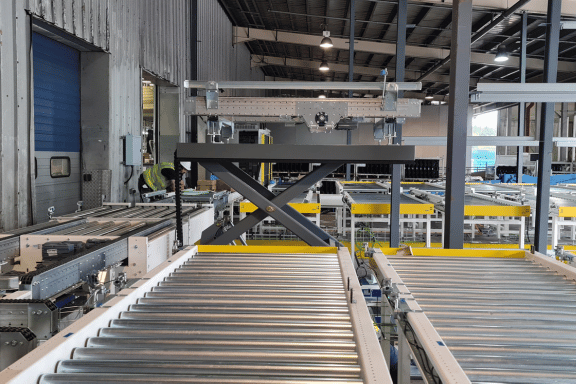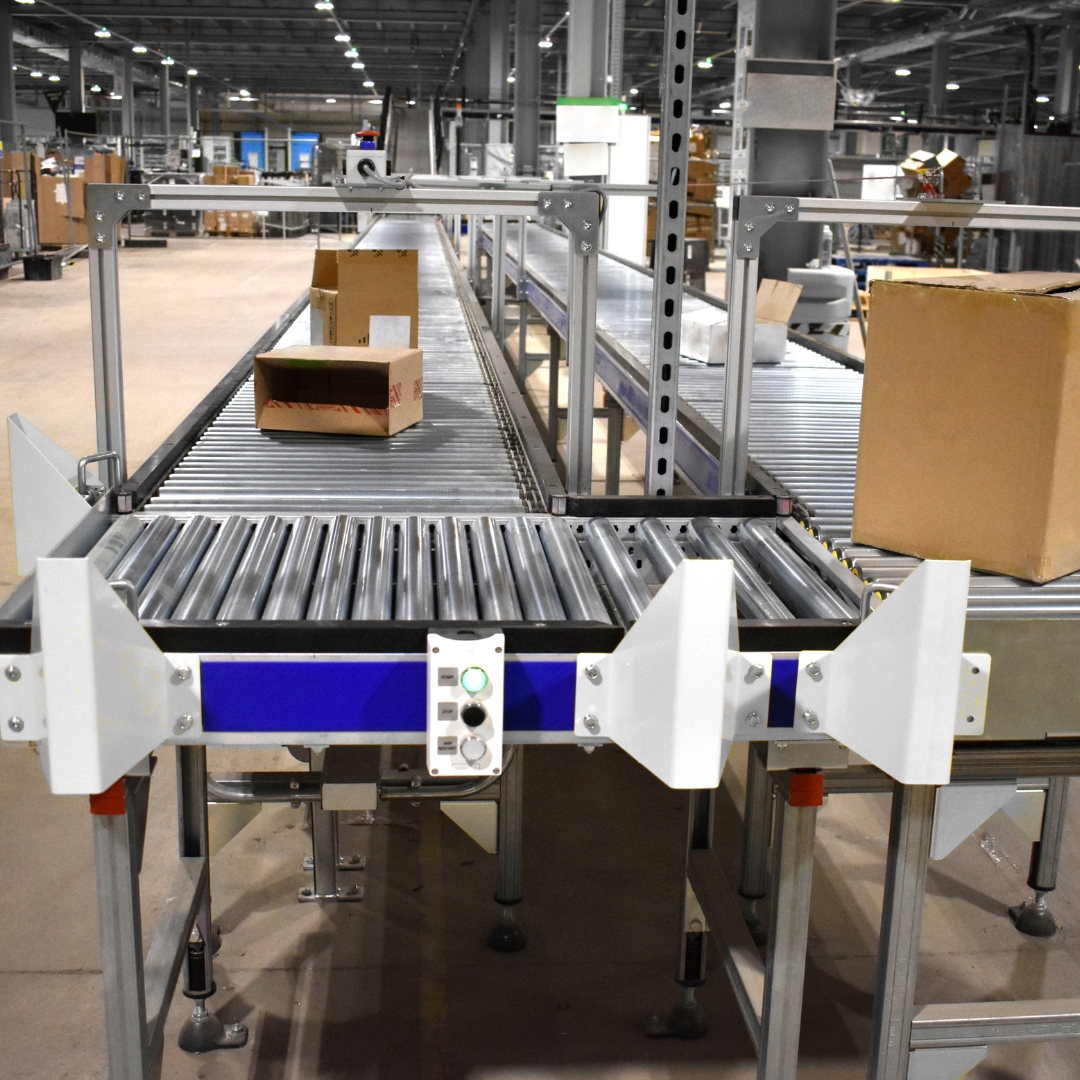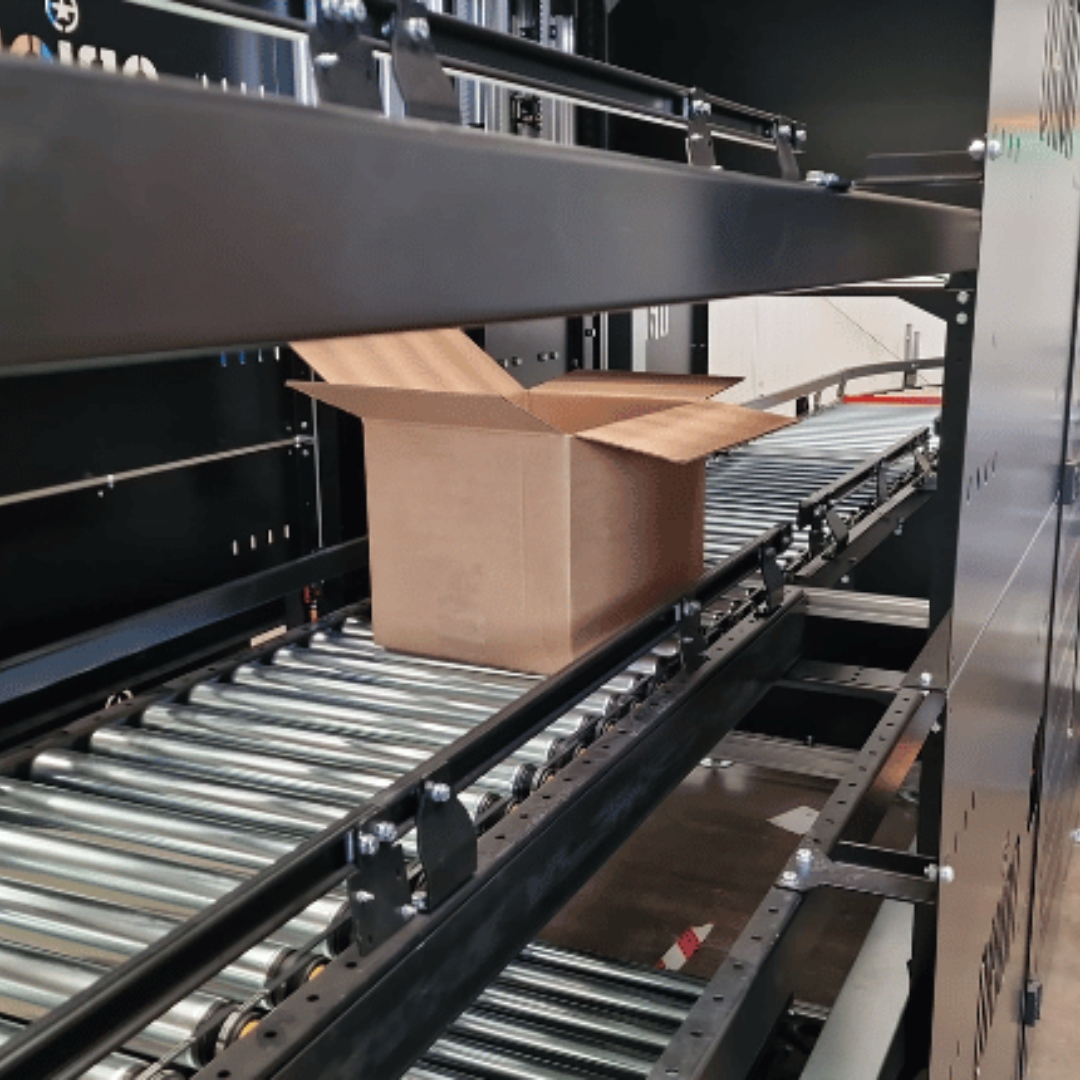As a leading manufacturer of rolling conveyor systems in the UK, we often get questions about how roller conveyors work. In this blog post, we'll dive into the mechanics of roller conveyors and explain the key components and principles behind their operation.
The Basics of Roller Conveyors
Roller conveyors consist of a series of rollers mounted on a frame. These rollers are typically made from steel, plastic, or rubber and are spaced at regular intervals along the conveyor's length. The rollers are supported by bearings that allow them to spin freely, reducing friction and enabling smooth movement of materials along the conveyor.Roller conveyors can be powered or gravity-fed. Powered roller conveyors use a drive mechanism, such as a motor or chain, to rotate the rollers and move the materials. Gravity-fed roller conveyors rely on the weight of the materials to move along the conveyor, which is often inclined slightly to aid the movement.
Key Components of Roller Conveyors
- Rollers: The rollers are the heart of the conveyor system. They come in various materials, sizes, and configurations to suit different applications and load requirements.
- Frame: The frame provides the structural support for the rollers and the conveyed materials. It is typically made from steel or aluminum and can be customized to fit specific space constraints or layout requirements.
- Bearings: Bearings are used to support the rollers and allow them to spin freely with minimal friction. They are crucial for ensuring smooth and efficient operation of the conveyor.
- Drive mechanism: Powered roller conveyors use a drive mechanism, such as a motor or chain, to rotate the rollers. The drive mechanism is typically located at one end of the conveyor and is connected to the rollers via a series of shafts and sprockets.
- Controls: Roller conveyors often incorporate controls, such as sensors and switches, to monitor and regulate the movement of materials along the conveyor. These controls can be used to start and stop the conveyor, adjust the speed, or detect jams or blockages.
Benefits of Roller Conveyors
Roller conveyors offer several benefits for materials handling applications:
- Efficiency: Roller conveyors can move materials quickly and efficiently, reducing manual handling and improving productivity.
- Versatility: Roller conveyors can be customized to fit various applications and can handle a wide range of materials, from small parts to heavy pallets.
- Low maintenance: Roller conveyors have few moving parts and are relatively easy to maintain, reducing downtime and operating costs.
- Safety: Roller conveyors can help reduce the risk of workplace injuries by minimizing manual handling and providing a safe and efficient way to move materials.
At Conveyor Units, we have been manufacturing high-quality roller conveyors in the UK for over 60 years. Our experienced team of engineers can design and build custom roller conveyor systems to meet your specific requirements. Contact us today to learn more about our rolling conveyor systems and how we can help improve your materials handling operations.






